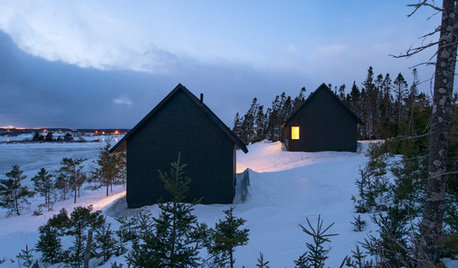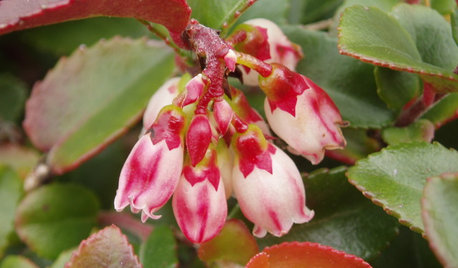The Year the Monarch Didn't Appear
Tom
10 years ago
Related Stories

SMALL KITCHENS10 Things You Didn't Think Would Fit in a Small Kitchen
Don't assume you have to do without those windows, that island, a home office space, your prized collections or an eat-in nook
Full Story
GARDENING FOR BUTTERFLIESBe a Butterfly Savior — Garden for the Monarchs
Keep hope, beauty and kindness alive in the landscape by providing a refuge for these threatened enchanters
Full Story
FALL GARDENINGWhat Monarch Butterflies Taught Me About Garden Design
Thinking like a butterfly leads to fresh perspectives in the garden and in life
Full Story
CALIFORNIA NATIVE PLANTSGreat Design Plant: Asclepias Is Attractive to Monarch Butterflies
Increase monarch butterfly populations in California by planting stunning native milkweeds
Full Story
Mirrors Make an Unexpected Appearance in the Kitchen
A reflective surface can lighten up and open up your cooking and dining area
Full Story
NATIVE PLANTS5 Ways to Keep Your Native Plant Garden Looking Good All Year
It’s all about planning ahead, using sustainable practices and accepting plants as living organisms
Full Story
SMALL SPACESLife Lessons From 10 Years of Living in 84 Square Feet
Dee Williams was looking for a richer life. She found it by moving into a very tiny house
Full Story
STUDIOS AND WORKSHOPSVisit London’s Shed of the Year
A modern Renaissance man carves out a multifunctional green oasis amid London’s urban whirl
Full Story
ARCHITECTUREDesign Workshop: A Recipe for Inspiration in the New Year
Attention to craft, humble materials, mystery and more will influence my architecture work in 2015
Full Story
GARDENING GUIDESGreat Design Plant: Evergreen Huckleberry Appeals All Year
Spring flowers and summer berries are only half the story with Vaccinium ovatum, a versatile Pacific Northwest native plant
Full StoryMore Discussions







Monarch-Ma-so.cal
Monarch-Ma-so.cal
Related Professionals
Simi Valley Landscape Architects & Landscape Designers · Jackson Landscape Contractors · Cockeysville Landscape Contractors · Coram Landscape Contractors · Lorain Landscape Contractors · Metairie Landscape Contractors · Miller Place Landscape Contractors · Ocoee Landscape Contractors · Tinton Falls Landscape Contractors · Altadena Fence Contractors · Kendall Fence Contractors · Leander Fence Contractors · Northlake Fence Contractors · Everett Window Contractors · North Hollywood Window Contractorshawaiiponder34
linda_tx8
Monarch-Ma-so.cal
MissSherry
Monarch-Ma-so.cal
TomOriginal Author
bernergrrl